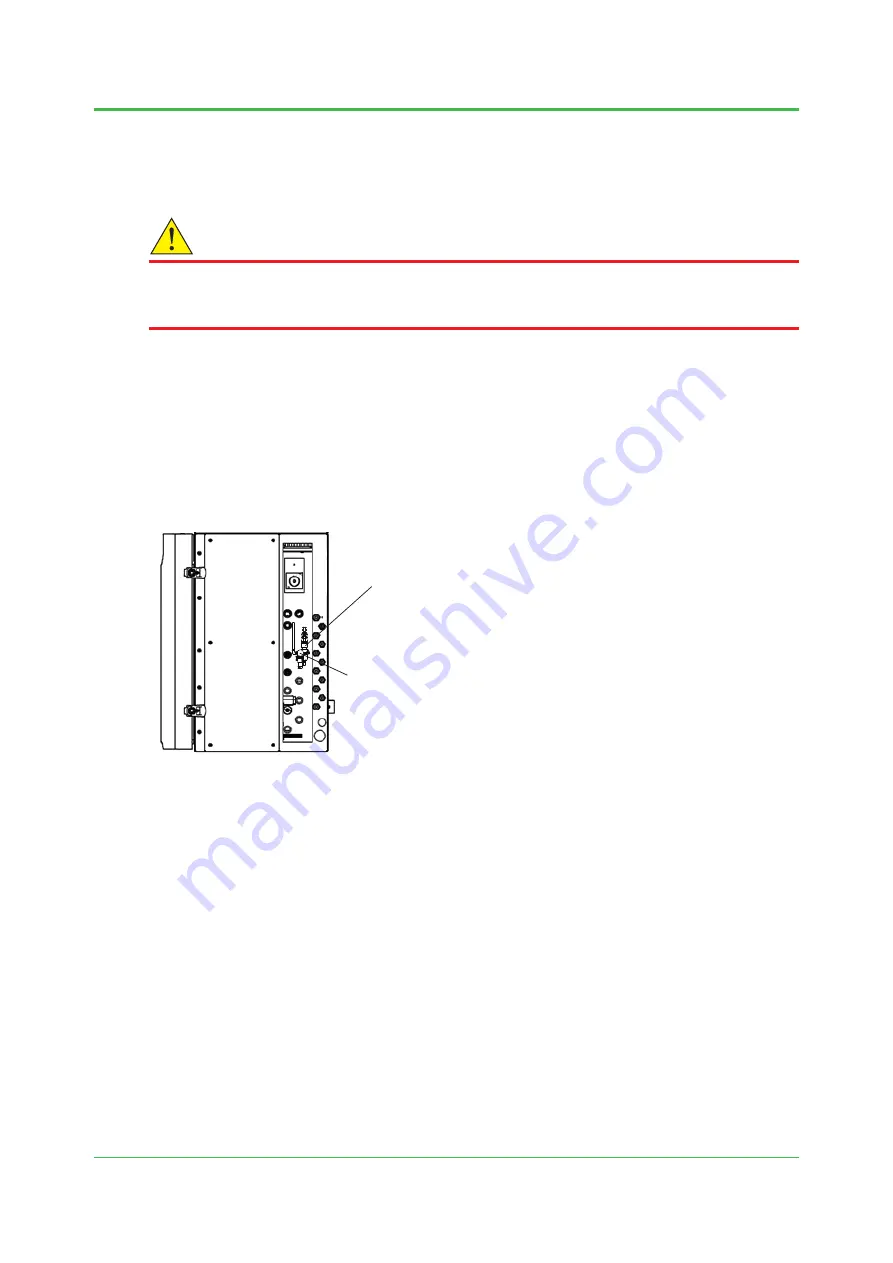
2. Installation, Piping, and Wiring
64
TI 11B08A01-01E
If the carrier gas contains moisture with a dew point of –60°C or above, it is recommended that a
desiccant, such as a molecular sieve, be used to remove moisture to prevent deterioration of the
columns.
Use stainless steel of O.D. 6 mm or 1/4 inch with any oil cleaned off.
CAUTION
Do not use solvents containing impurities such as non-volatile components to clean the inside
of the pipes. They will contaminate the inside of the pipes and prevent correct analysis. If it is
necessary to use a solvent for cleaning, use highly pure acetone.
(d) Instrument air pipe
These are the pipes for supplying air to the analyzer for actuating sampling and backflush valves
and for purging the inside of the electronics section and the ovens.
An air pressure of 350 to 900 kPa (500 to 900 kPa for FPD) is required. Use general instrument
air as the source and do the piping to the analyzer PURGE AIR port. A pressure regulator should
be installed in-between.
Use stainless steel pipe of O.D.1/2 inch or more with any oil cleaned off.
Vortex tube
(cooling device for FPD)
Regulator for vortex tube
Figure 2.11
Pressure and flow control section of the large isothermal oven
Air pressure set value of the regulator is depended on the source air temperature and need to
tune the setting value.
(e) Piping combustion air for FID/FPD
The FID/FPD air must not contain impurities that have an adverse effect on the analyzed results.
Use an air supply meeting the above condition and do the piping between this supply and the
analyzer BURNER AIR port.
Use stainless steel of O.D. 6 mm or 1/4 inch with any oil cleaned off.
(f) Piping combustion hydrogen gas for FID/FPD
Connect the piping between the outlet of the pressure regulator of a hydrogen gas cylinder
and the analyzer BURNER FUEL port. Supply it at 500 ±20 kPa to meet the explosionproof
requirements.
Use stainless steel of O.D. 6 mm or 1/4 inch with any oil cleaned off.
Sep. 07, 2017-00






























